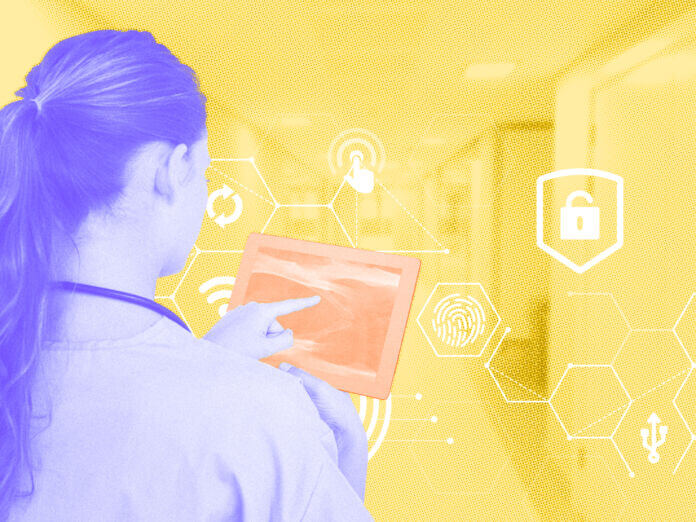
By ButterflyMX – May 21, 2024
Collected at : https://www.iotforall.com/how-iot-can-help-manage-healthcare-facility-access-control
Healthcare facilities manage access control and security thanks largely in part to the Internet of Things. Healthcare is a fast-paced industry that affects highly trained staff, patients in need of care, and often many visitors. Interconnected smart devices aren’t just a luxury in healthcare; they’re a necessity. Read on to explore how IoT access control impacts the many different types of healthcare facilities.
What Is Healthcare Facility Access Control?
Access control systems in healthcare facilities ensure that only authorized users can access specific areas. Once a user is authorized, the Internet of Things communicates this authorization to different access control hardware located throughout a healthcare facility. Some staff members, such as management, might have approval to access more secured spaces than staff members with less authority.
Access control devices for healthcare facilities commonly take the form of:
- Keypad door locks: Keypads are great for locking down staff-only rooms. Users can enter via their mobile devices, unique PIN codes, and key fobs/key cards. Being able to access a secured space quickly is essential because time is never in abundance for busy healthcare professionals.
- Elevator controls: Elevator controls can restrict specific floors of a facility to specific users. For example, if there’s a floor of a hospital that has a lot of expensive equipment or pharmaceuticals, then only staff members trained to handle these things may enter. Furthermore, some floors of a hospital, such as a maternity ward, might want to ensure that only verified visitors can enter.
- Vehicle readers: Parking is a big deal at many healthcare facilities, particularly hospitals. Vehicle access control ensures that healthcare facility staff members have separate access to employee parking. Staff members can place RFID tags on their windshields, and vehicle readers scan these tags before granting entry.
The above systems wouldn’t be able to operate without the interconnectivity between devices that the IoT provides.
How Is Access Control Used in Healthcare?
While we’ve explored how access control via the Internet of Things is used in hospitals, it also has a large impact on the following healthcare facilities.
Dentist Offices
While dentist offices aren’t as fast-paced or high-risk as hospitals, they rely just as much on access control devices. Dentist offices see a high volume of patients daily for any number of different procedures.
Dentist offices have a responsibility to secure:
- Expensive equipment.
- Dangerous pharmaceuticals.
- Patient and employee data.
Nursing Homes
Nursing homes are an example of healthcare facilities that benefit from IoT-based access control the most. This is because of how many visitors nursing homes receive on a daily basis. Nursing home residents often have family members coming to visit. An access control system can register each visitor and provide them with some level of access during visiting hours.
In addition to visitors, nursing homes and similar healthcare facilities have the unfortunate responsibility of keeping some patients from leaving the facility. Patients with memory problems and other mental health issues need to stay on the premises for their own safety. An access control system ensures monitoring of all of the entry points to a facility.
Pharmacies
The biggest liability for pharmacies is that pharmaceutical drugs will be stolen or accidentally wind up in the wrong hands. With an access control system, only licensed pharmacists will have access to secure spaces where drugs are kept. Additionally, an access control system will ensure that no confidential patient information stored on local servers can be accessed.
The Benefits of Access Control Systems in Healthcare
Access control systems powered by the Internet of Things provide the following benefits:
- 24/7 access: Many healthcare facilities require access at all hours of the day. An access control system ensures that the building remains secure even during the late shift.
- Simplified entry: Authorized users can enter secure spaces without any fuss, which frees up time for them to focus on their jobs.
- Remote management: User authorization can be provided by facility managers directly from their mobile devices. This ensures that new employees and/or visiting staff members from other facilities have quick access.
- Remote entry: From equipment to pharmaceuticals, healthcare facilities often get a large number of weekly deliveries. Delivery hours don’t always overlap with staff availability. Many access control devices feature remote entry that allows building managers to let delivery drivers drop off packages in a secure location.
- Integration: IoT-based access control systems integrate well with other security products that might be required at a healthcare facility, such as CCTV cameras and security turnstiles.
- Insurance: Hospitals and other healthcare facilities must have security systems in place if they want to be insured.
- Liability protection: If patient files are handled improperly, they could become a HIPPA violation. Additionally, if visitors or patients hurt themselves by touching dangerous equipment or by consuming unprescribed medication, the healthcare facility will be responsible.

Leave a Reply